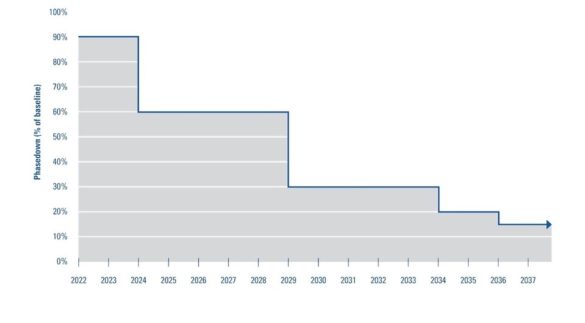There are many questions about the EPA restrictions on products made with R-410A refrigerant and the phase-out. These issues have left homeowners wondering whether to replace their equipment immediately or wait for the new refrigerant.
What is the reason for the refrigerant change?
First, let’s understand why this change was made mandatory. R22 has been the standard for decades, but it uses chemicals called hydrochlorofluorocarbons (HCFCs), which release chlorine when exposed to sunlight. Chlorine atoms combine with ozone to destroy the ozone layer. In 1995, the United Nations adopted the Montreal Protocol, which set out plans for the long-term phase-out of R22 and its replacement with HCFC-free R-410A. Studies have shown that R-410A contains HFCs with a high global warming potential (GWP). In 2016, the agreement was amended to the United Nations Montreal Protocol as the Kigali Amendment, setting standards but not specifying specific refrigerants to replace R-410A. It sets a January 1, 2025 deadline for the industry model to transition to non-HFC refrigerants. The organization plans to reduce HFC production by 85% over the next 15 years. It is also stated that a lower GWP model is set for 2034, which will require alternative refrigerants. Should you wait for the new R454B refrigerant, or buy a unit with R-410A that is tried and true?
Why replace with R-410A?
The main reason you should switch to R-410A equipment is because of the knowledge and understanding of it and how it reacts in a system. R-410A was first developed in 1991, entered mass production in 1995, became popular in 2005, and became the industry standard on January 1, 2013. This meant that by the time it became the primary refrigerant on the market, equipment had been produced with it for 18 years. R454B was first developed in 2018 and will become the industry standard on January 1st, 2026. This leaves both contractors and homeowners in limbo.
It is important to note that this change seems fast for the industry. Short-term and long-term understanding of these systems will be limited because contractors do not have the tools to learn and experiment. Training is available but limited. R454B units that have been released on January 1st, 2025 will be first-generation equipment. As with any first-generation technology or equipment, unforeseen problems may arise. We have been using R-410A equipment for nearly 20 years. Experienced technicians will pick up quickly on differences, but there will be unpredictable situations. It may be many years before we know how the new refrigerant will affect the long-term health of R454B equipment. The rapid pace of this change has left companies with little time for contractors to adequately prepare.
Is R454B safe?
There are many rumors about R454b. The first is the panic that R454B is classified as a semi-flammable refrigerant. This simply explains its ranking on the flammability spectrum. It has the same flammability as olive oil. It has been found to be non-hazardous and non-explosive. A bigger problem is that, because the refrigerant is semi-flammable, contractors must install sensors to detect its presence of a leak. This will lead to higher costs for customers, breakages and other technical issues. This sensor will also have its own control board. R454B is expected to remain a more expensive refrigerant than R-410A. Another advantage of R454B is that new equipment requires 5-10% less refrigerant than R-410A systems and has a GWP reduction of more than 50%. However, R454B equipment is expected to be 10-25% more expensive than R-410A components.
Refrigerant Phase-Down
Although the amount of R-410A currently allowed to be produced is being gradually reduced, the date when it will no longer be allowed is not yet clear. Therefore, R-410A will continue to be available to homeowners who had or chose to purchase R-410A equipment prior to the transition.
The Phase-Out Plan is as follows:
10% reduction in 2022
Additional 30% reduction in 2024
Additional 30% reduction in 2029
Additional 10% reduction: 2034
Last 5% reduction: 2036
Phase out of R454B to begin in: 2035


